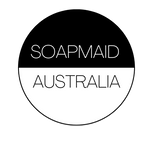
Vibrant Bath Bombs: Exploring Lakes and Dyes for a Colourful Bath Experience
Bath bombs have become a beloved addition to self-care routines, transforming ordinary baths into luxurious and aromatic experiences. Among the essential elements that make bath bombs enticing are their vibrant colours. Lakes and dyes play a pivotal role in achieving those captivating hues, enhancing the visual appeal of these fizzy delights. Let's explore how these additives work and how to use them effectively in your DIY bath bomb creations.
Understanding Lakes and Dyes:
1. Lakes: Lakes are water-insoluble dyes that are combined with a substrate to form a dispersion. They're known for their stability and ability to create vivid, long-lasting colours. Lakes are preferred for bath bombs as they won't bleed or stain the skin or tub, providing a delightful bathing experience without concerns about mess.
2. Dyes: Dyes are water-soluble colorants that dissolve in water, imparting vibrant colours to bath bombs. While dyes can produce intense hues, they might not be as stable as lakes and could potentially bleed or fade over time.
Using Lakes and Dyes in Bath Bomb Recipes:
1. Incorporating Lakes: When using lakes in bath bombs, it's crucial to disperse them evenly to achieve uniform colours. Mix the lake powder with your dry ingredients (such as baking soda and citric acid) thoroughly before incorporating wet ingredients like oils and water. This ensures the colour disperses evenly throughout the bath bomb mixture.
2. Adding Dyes: If opting for dyes, they can be added to the wet ingredients, like oils or witch hazel, before combining them with the dry ingredients. Remember to start with a small amount of dye and gradually increase until you achieve your desired colour intensity.
Tips for a Successful Colourful Bath Bomb Experience:
-
Experiment with Colours: Blend different lakes or dyes to create unique colour combinations for your bath bombs. Mix and match to achieve a spectrum of stunning hues.
-
Avoid Overuse: Be mindful of the amount of colorant used; adding too much can potentially stain the bathtub or skin. Start with small quantities and gradually increase until you reach the desired colour.
-
Test and Adjust: Before making a large batch, test a small portion of the mixture to observe how the colour develops in the water. Adjust the colour intensity as needed.
-
Consider Skin Sensitivity: If using dyes, ensure they are skin-safe and won't cause any skin irritation or allergies.
Experience our range of lake colours - click here to view
